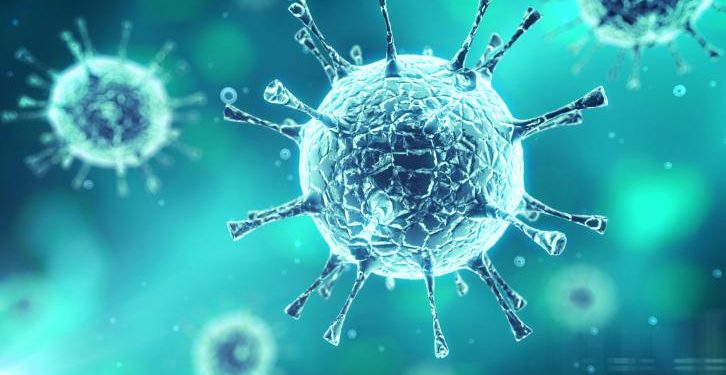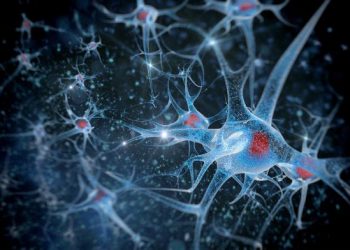CLL can be slow-growing and some patients may not need treatment immediately. This depends on the type of CLL, the stage and any genetic changes.
Using laboratory methods such as flow cytometry and cytochemistry, doctors can identify cells and determine the type of CLL. They can also find out if you have specific genetic mutations that increase your risk of getting the disease.
Symptoms
CLL grows slowly, so people are often diagnosed with the disease years before they experience any symptoms. The disease is sometimes discovered by chance when a blood test is ordered for an unrelated reason, or during a routine physical.
The body makes blood stem cells that become mature white blood cells over time — B lymphocytes that make antibodies to fight infection and natural killer cells that attack cancer and viruses. With CLL, too many of these stem cells turn into abnormal lymphocytes (leukemia cells) and they start to accumulate in the blood and bone marrow. This leaves less room for healthy white blood cells, red blood cells and platelets to grow. This can cause anemia, fatigue and infections. Swollen lymph nodes, spleen and liver are also common symptoms of this type of leukemia.
Doctors use several tests to diagnose CLL. A blood sample will show how many lymphocytes are in the blood, and a bone marrow biopsy may be needed to confirm the diagnosis. A bone marrow biopsy involves inserting a needle into your hip bone to remove a small amount of liquid marrow. The marrow is then tested for cancerous cells, and a chromosome analysis is done to look for deletions of chromosome 13 or other abnormalities that can indicate the likelihood of faster-growing CLL.
Symptoms of CLL can range from mild to severe and may come and go. You might feel tired, but this can be controlled with medication and rest. You might also get a fever, or have a feeling that your spleen or liver is full or hurting, because of the extra lymphocytes in those organs. It’s important to keep in mind that more than half of people with CLL are asymptomatic at diagnosis. Severe symptoms or rapidly progressing disease may be signs that you need to begin treatment.
When you have CLL, you may need a combination of treatments to help control your symptoms and keep the cancer under control. Typical treatments include chemotherapy and targeted therapy. These drugs kill cancerous cells and spare normal ones. They are usually taken as pills. Side effects depend on the drug you receive, but can include low blood counts, diarrhea, nausea, fatigue and skin rashes. Radiation therapy uses high-energy rays to destroy cancer cells and relieve pain. It may be used to shrink a swollen lymph node, your spleen or your liver, or to treat bone pain.
Diagnosis
Many people diagnosed with CLL do not have any symptoms when they are first diagnosed. If they do have symptoms, the symptoms may come and go and vary in intensity.
A blood test called a complete blood count or CBC can help diagnose CLL. This tests for different types of cells, including B lymphocytes. If your CBC shows a higher than normal number of B lymphocytes, your doctor will order further tests to confirm the diagnosis.
These tests look for special proteins on the surface of leukaemia cells. They can be done on a blood sample or a bone marrow sample. This test is called immunophenotyping and is done by a specialist diagnostic laboratory. Your haematologist will also order a special genetic test for CLL, called cytogenetic analysis. This test can help doctors predict how fast the cancer will grow and whether you will need treatment soon.
Depending on the stage of your CLL, doctors can choose to treat you straight away or wait. It is important to discuss all of your options with your doctors, as there are a variety of treatments that they can use and sometimes clinical trials that you might be able to participate in.
If your doctor recommends waiting, they will monitor you closely for a long time to make sure the cancer does not grow or cause any symptoms. They will probably ask to see you frequently and run routine bloodwork, which is called active surveillance. Some people live for years without needing any treatment.
For some people, a combination of drugs is the best option. These can include chemotherapy, targeted medications and a stem cell transplant (sometimes called a cellular therapy). They are used in different ways depending on the person’s risk.
Other treatments that may be recommended by your OSUCCC – James subspecialists include radiotherapy, surgery and leukapheresis. These are more invasive, but they can improve your quality of life. They can also reduce the risk of cancer recurrence.
Treatment
For most people, CLL grows slowly and causes few symptoms. You may be able to manage your condition with palliative treatments that do not cure the leukemia. These may include medications for nausea and fatigue, therapeutic massage, breathing exercises and acupuncture, nutritional changes, and emotional support. You may also need a procedure such as radiation therapy, to help shrink swollen lymph nodes or the spleen, or to treat bone pain.
Current first-line treatment for CLL includes chemotherapy and targeted therapy. These treatments work to destroy cancer cells and may give you a remission (a period without signs or symptoms). Chlorambucil and bendamustine are the most commonly used chemotherapy drugs for CLL. Both can cause side effects, including low blood counts and fatigue, but most go away after treatment is over.
Another way to treat CLL is with a drug called ibrutinib, which targets proteins that cause cancer cells to grow. This drug is taken as a pill. It is often combined with a type of chemotherapy, which increases its effectiveness and reduces side effects, such as lower blood counts.
Newer medicines target specific parts of the DNA in a cancer cell. These types of treatments, including acalabrutinib, ibrutinib and zanubrutinib, may be more effective than standard therapy, and they are available in clinical trials.
Other medications to consider include a type of immune system booster called a cyclophosphamide. It increases the number of white blood cells in the body and helps them fight infections. They are usually given by vein. For some patients, the doctor may recommend a stem cell transplant from a healthy donor. This procedure removes some of your own stem cells from the hip and marrow (a hollow area inside bones where blood cells are formed). These cells grow into blood cells that replace those damaged by chemotherapy, and they will not multiply into cancer cells.
Some people are not ready to start treatment, and their doctor will recommend an approach called watch and wait. This means you will have regular checkups and blood tests to monitor your condition. You will need to avoid live vaccines and certain types of infections.
Living with CLL
It can be difficult to live with CLL, especially in the later stages of the disease. It can impact a person’s physical health, emotional well-being, and social life. People living with the disease should work to balance these factors and manage their stress levels as much as possible. Taking steps to communicate openly with friends and family, find support groups, and seek counseling can help.
The condition develops when B lymphocytes, which are white blood cells that fight infection, develop abnormally and multiply out of control. The abnormal lymphocytes, called leukemia cells, build up in the bone marrow and take up valuable space that could be used for healthy red blood cells, platelets, and normal white blood cells. Over time, this can cause anemia, fatigue, and easy bleeding.
Symptoms of the disease vary widely among individuals. Most people with CLL have a mild form of the disease that progresses slowly. They may have no symptoms at all when diagnosed or have only minor ones, such as swollen lymph nodes. Others have more severe symptoms, such as a low blood count or swollen liver or spleen.
Doctors can very rarely cure CLL, but survival rates are good for people who have been diagnosed early and receive treatment as soon as they start to show signs or symptoms. There are several different treatments for the disease, and most patients are in remission within months of starting treatment.
Some people are treated with watchful waiting, a strategy where doctors wait to see if the symptoms worsen before beginning treatment. They do this by checking the patient’s blood counts, symptoms, and other test results often. They also consider genetic test results and whether or not the patient has other risk factors that indicate the disease will progress faster than usual.
Other treatments include chemotherapy and radiation therapy. The goal of these is to kill cancer cells while limiting damage to healthy cells. Some patients experience remission after these treatments, but the disease is likely to return. Some people are at greater risk of developing CLL, including those whose relatives have had the disease, those who were exposed to Agent Orange during the Vietnam War, and those with certain genetic mutations.









